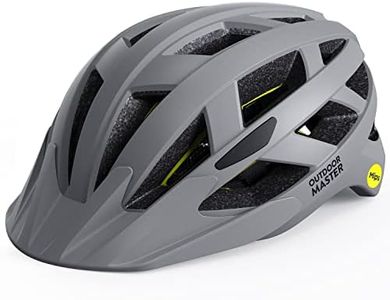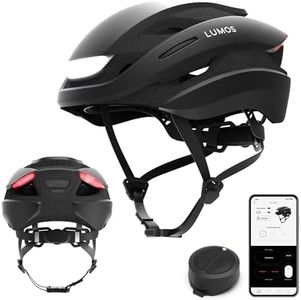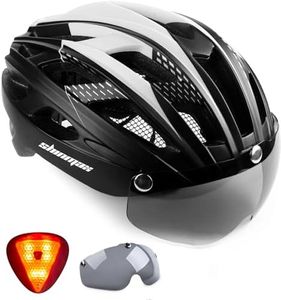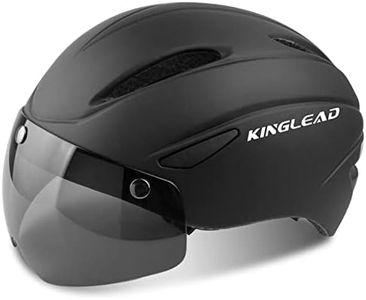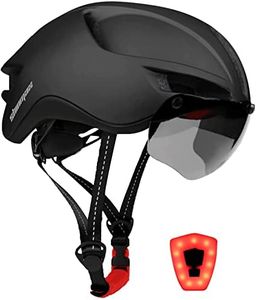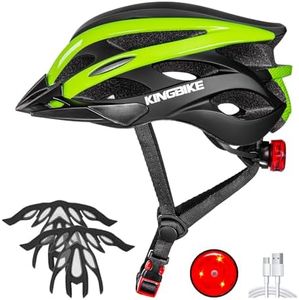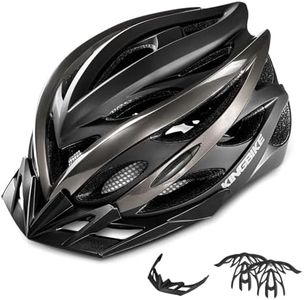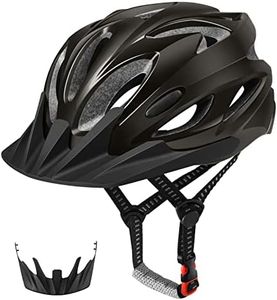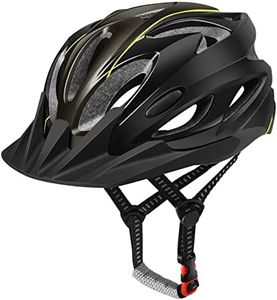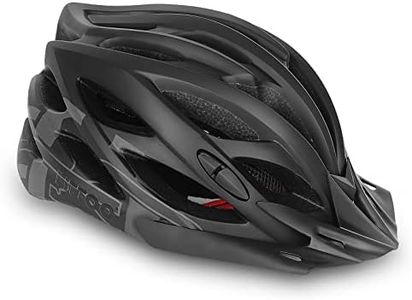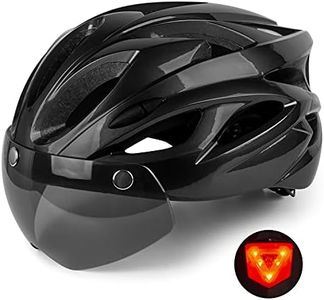We Use CookiesWe use cookies to enhance the security, performance,
functionality and for analytical and promotional activities. By continuing to browse this site you
are agreeing to our privacy policy
10 Best Mountain Bike Helmets
From leading brands and best sellers available on the web.Buying Guide for the Best Mountain Bike Helmets
Choosing a mountain bike helmet is a crucial decision because it directly affects your safety and comfort while riding. The right helmet not only protects you during falls but also enhances your biking experience through fit, ventilation, and special features. To find the best one for yourself, you need to consider where and how you ride, as trail conditions and riding styles can mean different priorities. Always try on a helmet if possible, ensure it fits snugly without being uncomfortable, and look for safety certifications for added peace of mind.Fit and ComfortFit is about how snugly and comfortably a helmet sits on your head. If a helmet doesn't fit well, it won't provide proper protection and may even be distracting. Helmets often come in sizes or with adjustable systems. Small, medium, and large sizes generally cover most adults, while some helmets offer fine-tuning adjustments with a dial or strap. A good fit is secure all around your head and doesn't move when you shake or tilt your head. Try on the helmet or measure your head to match sizing guides, and remember your personal comfort is the best indicator—if it feels good at the start, it’ll likely feel good on longer rides.
VentilationVentilation refers to the number and size of the openings (vents) in a helmet, which allow air to flow and keep your head cool during rides. In general, more or larger vents provide better cooling, but sometimes too many vents can reduce protection in certain models. Helmets designed for cross-country riding often have more vents for maximum cooling, while those for downhill or enduro trails might sacrifice some ventilation for added durability. Choose the level of ventilation based on your typical riding temperature and intensity—if you ride in hot conditions or for long distances, prioritize better airflow.
CoverageCoverage describes how much of your head the helmet protects. Mountain bike helmets usually offer more coverage at the back and sides compared to road bike helmets, due to the higher risk of falling on trails. Some helmets are designed for light trail use with standard coverage, while others are extended or full-face models, ideal for aggressive or downhill riding. If your trails are technical and you ride fast, extra coverage or a full-face design might be wise. For casual or cross-country rides, lighter helmets may be adequate and more comfortable.
Safety FeaturesSafety features include things like impact protection technologies (for example, MIPS or other slip-plane systems), certifications, or reinforced structures. These systems are designed to reduce the force transferred to your head during an angled impact. Helmets should meet standard safety certifications, which means they've passed important impact tests. If you’re tackling technical trails or want the latest in protection, look for a helmet with advanced safety features. For less aggressive riding, basic certified protection may suffice.
Adjustment SystemThis is about how you fine-tune the helmet’s fit, usually through dials, sliders, or adjustable straps. A good adjustment system lets you make the helmet snug and stable without pressure points. Some helmets have simple straps you manually adjust, while others have ratcheting dials or multi-point systems for one-handed tweaking. If you plan to adjust your helmet often, or share it between people, a more sophisticated system may offer greater flexibility and comfort.
WeightHelmet weight affects both comfort and fatigue during long rides. Lighter helmets are generally more comfortable but might offer less coverage or fewer features. Heavier helmets can feel cumbersome over time, but they often include more robust protection, especially in full-face varieties. If you mainly do cross-country or long rides, prioritize a lighter helmet. For downhill or enduro, a heavier and sturdier option might be better for extra protection.
VisorA visor is a small extension at the front of the helmet that helps shield your eyes from sun, rain, branches, and debris. Some visors are adjustable while others are fixed. If you often ride in sunny or wooded areas, a visor can help with visibility and safety. If your rides are mainly on open trails without obstructions, the visor may be less important. Pick based on the types of trails you most often ride.
Removability and Washability of PaddingInterior padding inside the helmet boosts comfort and can absorb sweat. Helmets with removable and washable padding are easier to keep clean and odor-free. If you ride often or in hot conditions, removable padding is important for hygiene. If you only ride occasionally, fixed padding may be sufficient, though eventually all riding gear benefits from a quick wash.
